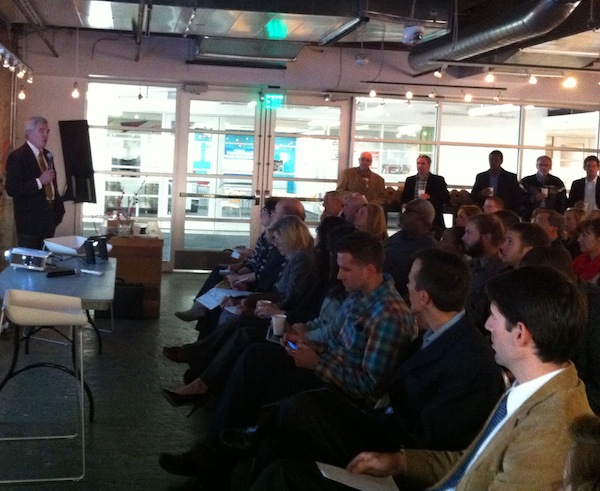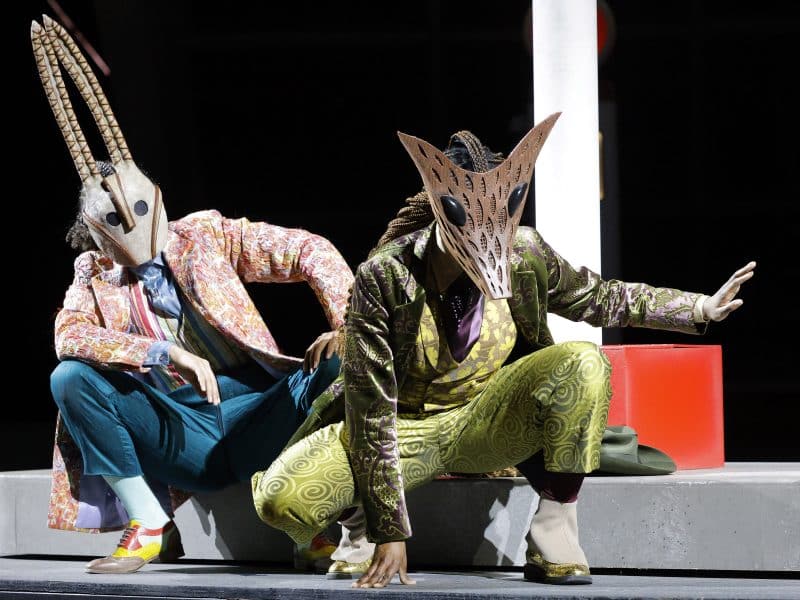Speaker Series recap: Christopher Leinberger on urbanism and economic development
Our October Speaker Series featured a conversation with national land-use strategist, developer and Brookings Institution fellow, Christopher Leinberger. Was it good? Better than that. Walter Wasacz taps out notes on his iPad.

Only minutes after he began his talk at the Detroit Creative Corridor Center last Friday morning, Christopher Leinberger seemed to have the standing room only crowd thoroughly won over.
He did it by weaving together topics near and dear to a group made up of business and thought leaders, designers and architects — creatives of all stripes willing to gather at 8 a.m. for a talk about how good urbanism stimulates economic development.
A national land-use strategist, developer and Brookings Institution fellow, Leinberger said the prevailing real estate strategy over the last 60 years has led to “driveable suburban, not walkable urban” development. He said that “walkable” translates into community life on a scale that includes multiple options of transit: trains, buses, bicycles and, yes, automobiles, though not as the dominant means of transportation.
“The American Dream was based on an industrial, auto-based economy with the mall becoming the new town center,” Leinberger said. “We have massively overbuilt from 1960 to the present. There’s been no shortage of land developed, resulting in incredibly energy consumptive suburban sprawl.”
The catalyst for this “driveable suburban” model, Leinberger said, was a General Motors’ sponsored presentation at the 1939 New York World’s Fair Futurama exhibition. The theme of the World’s Fair was a utopian vision called the “World of Tomorrow,” a vision many believed was needed at the tail end of the Great Depression.
“The exhibit, created by industrial designer Norman Bel Geddes, influenced an America that by 1960 would be built around the automobile,” Leinberger said.
He showed scenes from movies and TV shows (Back to the Future, I Love Lucy) to illustrate that utopia had its flaws. In the “Lucy” episode, the characters initially love the peace, quiet and fresh air of their new Connecticut subdivision — until friends and neighbors from New York City follow them there, bringing the same problems they attempted to escape.
“This was what wasn’t thought through,” Leinberger said, “that the quality of life erodes, that you have to keep building and throwing things away.”
He said new urbanism practice has resulted in major changes in regions like the Washington D.C metro area, where there are 35-40 walkable communities, many taking the place of crime-infested neighborhoods of the 1970s and 1980s. Other cities (Philadelphia, Seattle, Pittsburgh) have seen great benefits in transitioning from an auto-based to walking-based development strategy.
“Creatives, singles, couples, empty nesters demand walkable cities,” he said. “There is a growing demand, but short supply.”
Leinberger said there are 6-7 walkable centers in Southeastern MIchigan. “There needs to be 25-30 centers,” he said. “The number one thing that needs to get done is the M1 line. It has to get done. It’s the kind of catalytic development needed in this region. It’s not as important to move people as it is to spark economic development. And it will.”
Leinberger is a founding partner of Arcadia Land Company, a transit-oriented development and consulting firm, and the founding director of the Graduate Real Estate Development Program at the University of Michigan. Voted one of the “Top 100 Urban Thinkers” by Planetizen, he was the recipient of the William H. Whyte Award from Partners for Livable Communities in 2010. Leinberger also serves as the President of LOCUS: Responsible Real Estate Developers and Investors.
This Model D Speaker Series is presented by WDET, MSHDA and Detroit Creative Corridor Center.





